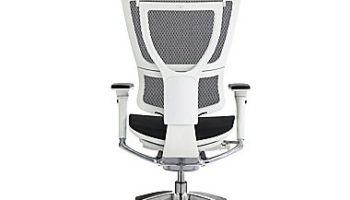Mike Dye of MDA Design Offers Limited Edition RW Chair
Michael Dye of MDA Design would seem to enjoy breaking down human anatomy into its component parts. If these might be limited to, say, three in number, the prime contenders would have to be (in no particular order) head, spine, and seat, with lower legs and feet coming in as close runners-up. Anyway, such is the blueprint Dye creates of homo sapiens’ important parts where sitting is concerned, as expertly brought to life in the designer’s recent RW Chair.
Limited Edition RW Chair. Designed by Mike Dye of MDA Design Offers.
An Ergonomic Innovation that’s Customized and Adjustable
RW responds to the facts of human sitting. That is to say, the piece acknowledges the truth of our universal propensity for squirming and adjusting. For, unless you happen to be a Yogi or a Trappist Monk, you’re probably among the 2 billion or so chair-bound folks who feel compelled to move every 10 minutes or so. For us prisoners of the corporeal, fixed set-ups just don’t fit the bill. Thankfully, Dye’s RW offers adjustable seat heights, back angles, and head support–“a range of features very unusual for domestic furniture.”


The chair’s back matches the collective (and happy) spines of all those who sample its inviting contours. Made of kiln dried oak, these twin slats feature slight curves—congenial to most human backs—and row upon row of perforations, just the ticket to accommodate the adjustable supportive cushions (read: varied head heights and lumbar curves) of users. RW’s structural lynchpin is the cantilevered steel base, which provides support for the amply padded seat. Like the headrest and lumbar support, the seat height is easily adjustable courtesy of a simple screw mechanism.
Dye’s design takes inspiration from “a brief from a private collector who could not find a chair that provided head and arm support which could be gradually adjusted to reflect the sitter’s changing posture.” RW obviates that particular conundrum and does so in high style. The chair not only offers an ergonomic solution to our yen for perpetual micro-movement, it also proposes a cure for the less-publicized malady of “chair sameness.” Because RW’s unique look is classical and futuresque, mechanical but not mechanized, “a simple aesthetic that will age gracefully and help the sitter do the same.”
Via ChairBlog.




Leave a Reply